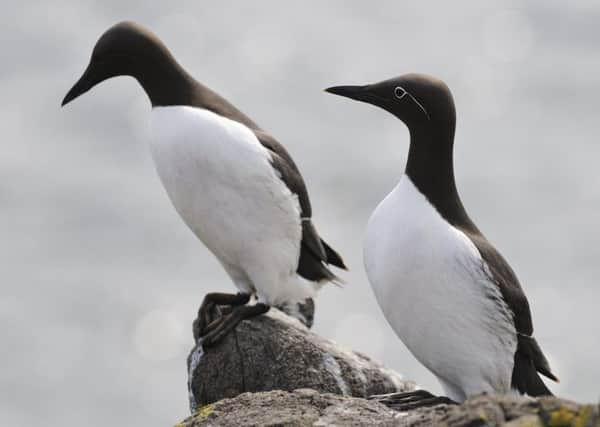New figures suggest dive in seabirds is levelling out


The latest figures suggest dramatic declines in many species have slowed in the past four years and numbers may have stabilised.
Around a third of all the European Union’s seabirds have their breeding grounds in Scotland.
Advertisement
Hide AdAdvertisement
Hide AdBut results from the UK-wide seabird monitoring programme show populations have crashed to half the size they were when the scheme began in 1986, with current numbers estimated at five million.
The most drastic declines have been recorded since the early 1990s.
However, statistics from the latest biodiversity indicator for seabirds, published by Scottish Natural Heritage (SNH), point to early signs of recovery.
The number of chicks produced last year was higher than the long-term average for half of the 12 species assessed – arctic skua, black-legged kittiwake, common tern, common guillemot, northern gannet and sandwich tern.
Conversely, breeding success was below average for three species, including the herring gull, and around average for the arctic tern, puffin and great skua.
Arctic skuas have suffered the most severe losses, with numbers down 76 per cent over the past three decades.
The government nature agency has described the statistics as “encouraging”.
But conservationists have urged caution over the counts, which they fear may not reflect an accurate picture of the health of Scotland’s seabird populations.
Advertisement
Hide AdAdvertisement
Hide AdAlex Kinninmonth, head of marine policy at RSPB Scotland, said: “Although the latest seabird biodiversity indicator report provides welcome news on some species in 2015, it’s little more than a glimmer of hope against a backdrop of severe declines for many of Scotland’s seabirds.
“We know, for example, that numbers of kittiwakes have declined by up to 90 per cent at historic strongholds on Orkney and St Kilda and reversing these downward trends will require a concerted and sustained effort on many fronts.
“The Seabird Monitoring Programme provides useful seabird colony counts from a sample of sites each year.
“Unfortunately, confidence in the trends from this long-term monitoring programme is declining as a comprehensive census has not been carried out in over 15 years.
“Another national seabird census is desperately needed to provide an up-to-date benchmark and reveal the true scale of the conservation task ahead.”
Seabirds are considered important indicators for assessing the state of the marine environment, since populations respond to factors such as food availability, climate, predation and pollution – all of which are believed to be driving declines.
Simon Foster, trends analyst for SNH, said: “Scotland is an incredibly important place in the world for seabirds.
“Our seas and marine wildlife are a unique and exciting part of nature and they attract many thousands of people to visit Scotland every year.
“This latest indicator shows the importance of continued long-term monitoring in helping understand what is happening to our seabird populations.”